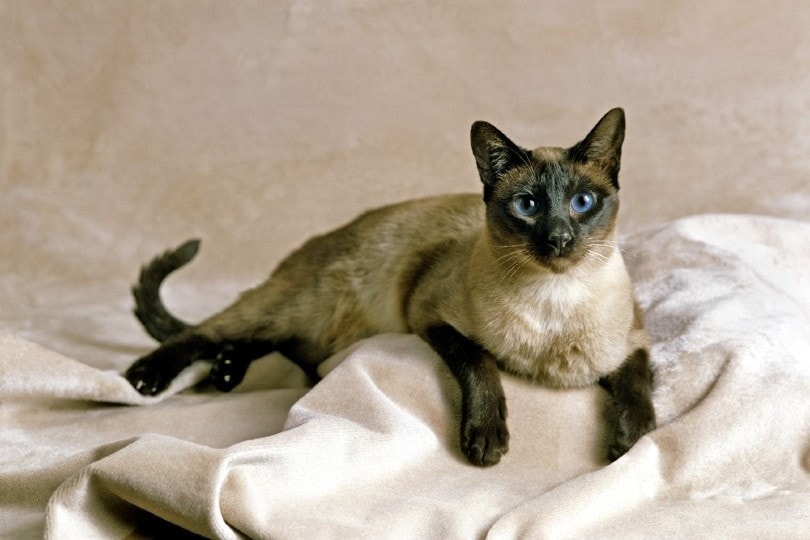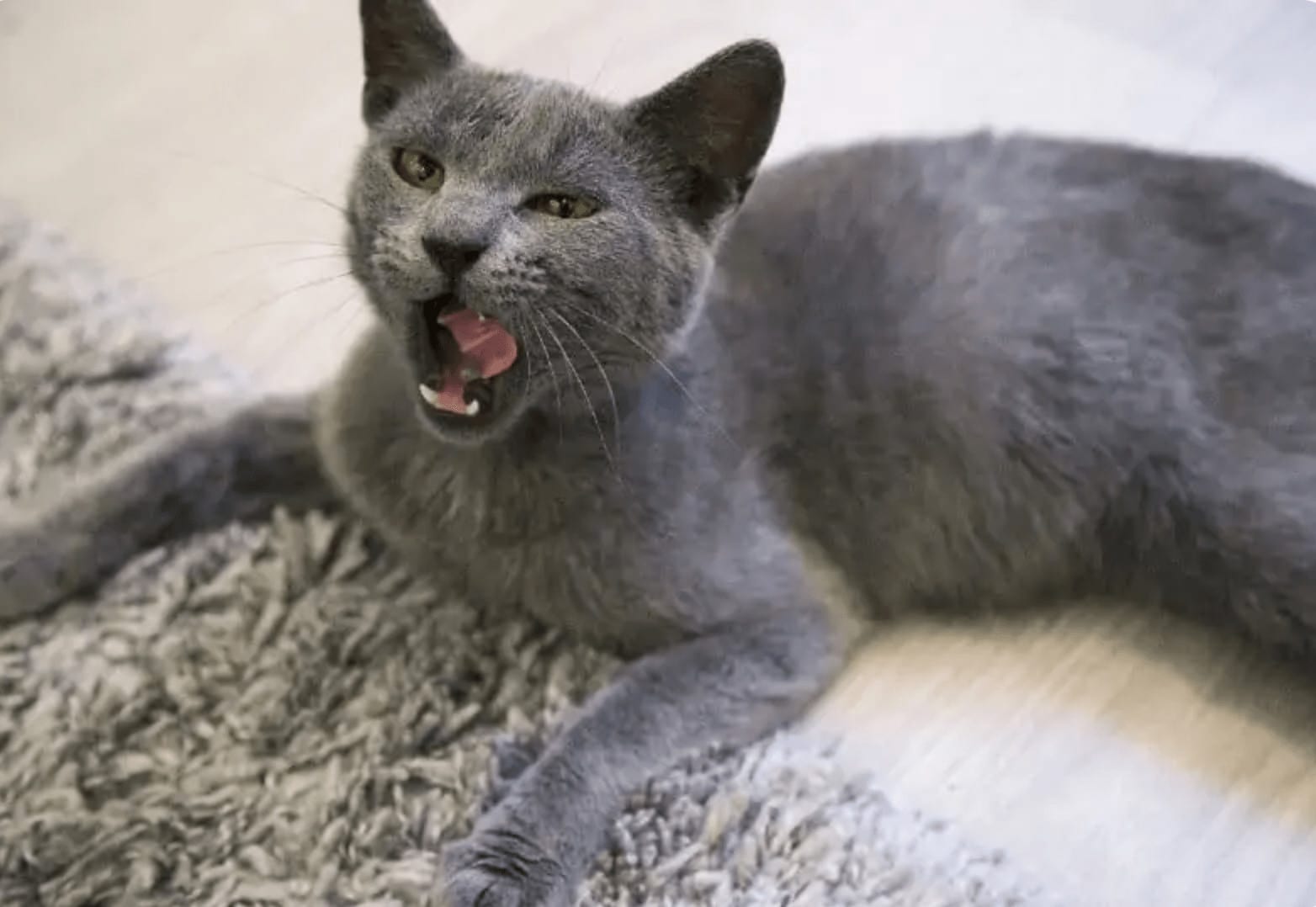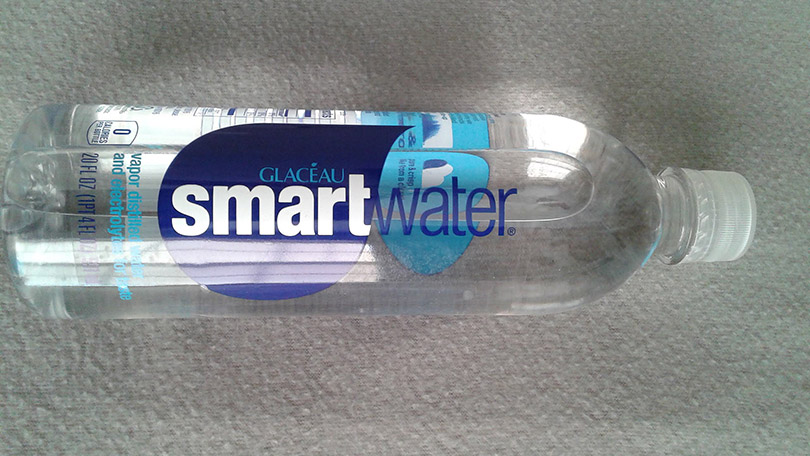Can Cats Eat Wheatgrass? Vet-Approved Facts
By Luxifa Le
Updated on
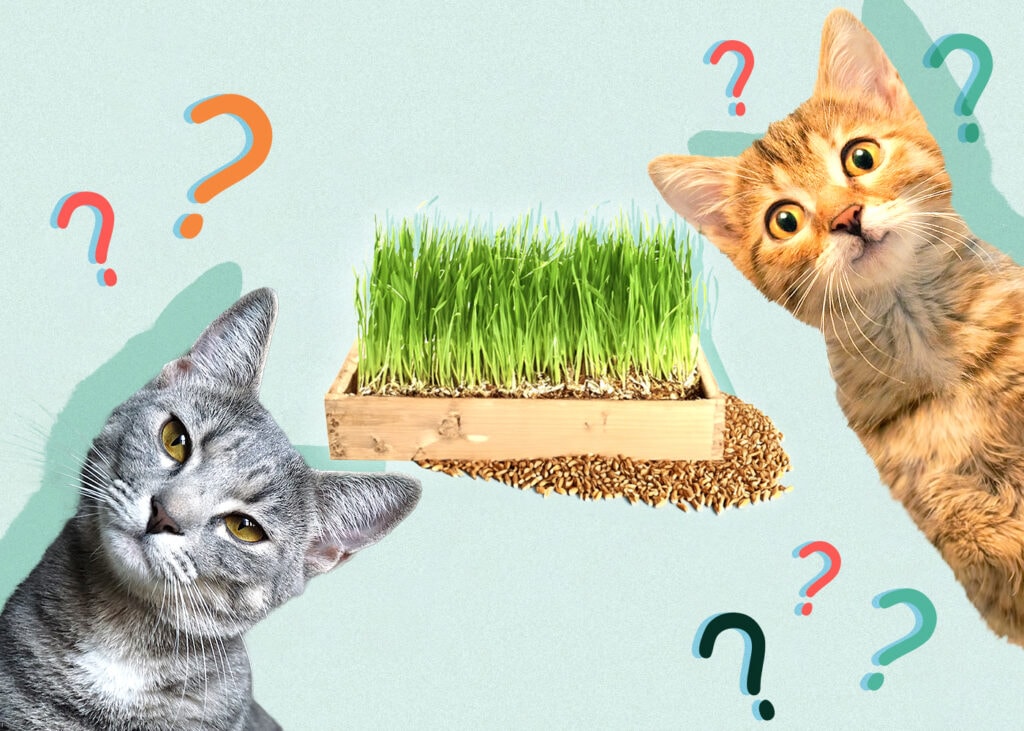
Curiosity may have killed some cats, but others thrive even in precarious situations. Food is one of the most tempting things you can put in front of your cat. Some cats will eat just about anything offered to them, even things that are bad for them. Wheatgrass is a common type of cat grass and a tempting treat for your cats.
Luckily, it’s perfectly safe for them to eat in small amounts. Read on to learn more about the benefits of wheatgrass!
Cat Nutrition Made Simple
The health benefits cats get from wheatgrass may surprise some cat owners. As obligate carnivores, cats lack the proper enzymes to break down plant material into nutrients. These missing enzymes, usually produced by gut bacteria present mainly in herbivores, help the animal’s stomach break down plant materials into the basic nutrients that sustain the body. Since cats don’t have these enzymes, they don’t get the same amount of nutrients from eating plant material that omnivorous or herbivorous animals do.
One of the historical anecdotal theories is that in the wild, cats and dogs derived some of their plant-based nutrients directly from the stomachs of their prey. However, plant material, mainly grass, is oftentimes present in the wolves’ feces, indicating they munch on grass intermittently.1
Ingestion of grass as a source of fiber and nutrients may be reduced in domestic indoor cats. This is why offering your cat grass, and growing some yourself, may be beneficial for their digestive and overall health. Wheatgrass is one plant that shouldn’t take much convincing for your cat to eat. It’s a tasty treat that cats and dogs seem to love, and luckily for us, this treat is healthy for cats in moderation.
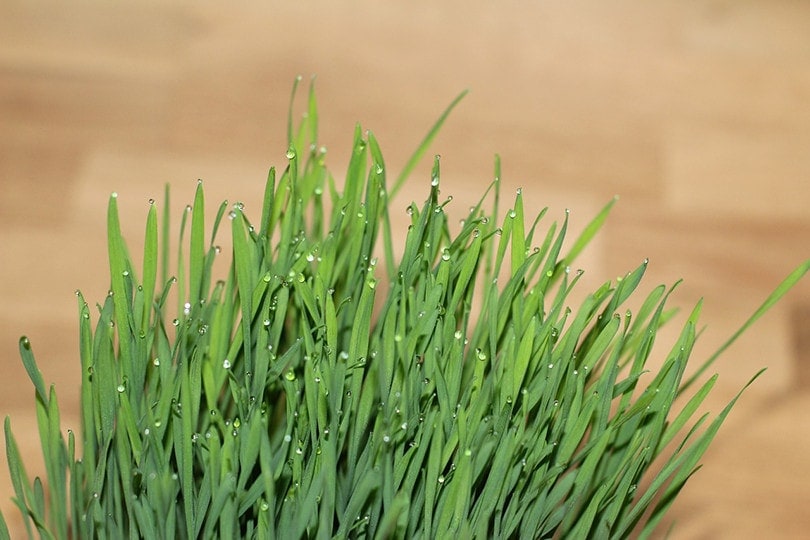
What Is Wheatgrass?
Despite the name, wheatgrass does not contain wheat gluten. Wheatgrass is harvested from wheat plants before the plant becomes a gluten-forming grain. It’s rich in antioxidants, vitamins, and minerals that most animals could use a little more of in their diets.
Wheatgrass is one plant that cats seem to like to eat. Wheat plants are an essential part of the cat grass mixture. Cats will nibble on this grass happily, unlike many other plants.
Potential Health Benefits of Wheatgrass for Cats
Wheatgrass contains chlorophyll, carotene, fiber, antioxidants, vitamins, and minerals that make a great addition to any cat’s diet. These nutrients may assist in maintaining health alongside a complete and balanced diet but are not the main source of nutrition for cats and should not be considered as such. The additional fiber from the wheatgrass also supports healthy gastrointestinal function and can help cats maintain regular digestion and mild issues like hairballs.
Wheatgrass contains vitamins D, A, E, C, K, and B. The amounts of these vitamins in grass are, however, not sufficient enough to be a significant source of nutrients for your cat—more like a healthy snack on the side. Cats should not eat excessive amounts of grass either, as it’s not digestible, and too much grass at once can cause a blockage of the stomach or intestines.
Vitamin D regulates the balance between calcium and phosphorus, alongside many other functions, while vitamin A helps maintain a good vision and promotes healthy eyes. Vitamin E helps with skin and coat health. Vitamin C boosts the immune system, while vitamin B boosts metabolism. However, cats produce their own vitamin C and rarely need supplementation. Lastly, vitamin K is essential for the coagulation process. These vitamins in grass alongside your cat’s regular diet that contains sufficient amounts of all required nutrients, are great for keeping your cat healthy and happy!
Additionally, wheatgrass plants provide a healthy alternative for cats who love to eat your houseplants. If you have issues with your cat taking bites out of your beloved houseplants, consider planting some cat grass or wheatgrass to give them something to eat that won’t harm them or your home decor. Make sure to familiarize yourself with cat-safe plants, not to keep anything toxic in the house, as cats won’t distinguish between them. Some toxic plants, such as lilies, can cause severe and irreversible kidney damage in cats.
Safely Feeding Wheatgrass
One of the most accessible ways to get your cat to eat wheatgrass is by purchasing a cat grass plant from a pet store. Cat grass is a mixture of grass seeds, including barley, rye, and wheatgrass. This is a great way to get your cat some healthy grass they can eat. You can allow them to eat the live plant if they like to do that, or you can clip some of the plants and serve them to your cats with their regular food.
Clipping your wheatgrass is a great way to serve wheatgrass to a cat who likes to overindulge in the live plants. Keep the grass out of reach of your cats and help them with some clippings with their regular food, as excess ingestion of grass at once should be avoided. It may lead to a stomach upset or a gastrointestinal blockage since grass is not digestible.
If you ever notice your cat retching, gagging, swallowing excessively as if they have something in their throat, sneezing, vomiting, eating less, or having a discharge from their nose, they may have a blade of grass stuck behind their soft palate. Take them for a vet check promptly so this can be removed under sedation if present, or appropriate investigations and treatment can be started if there is no grass.
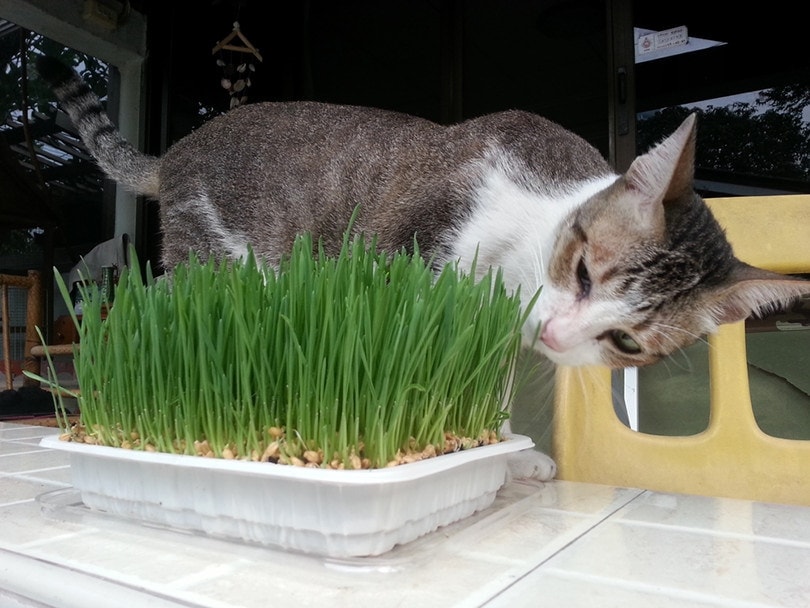
Other Cat-Safe Plants for Your Home
If you have a cat who is constantly curious about your houseplants, one of the best things you can do is keep plants that won’t harm your cats if they take a curious nibble. There are a lot of plants that are safe for cats to ingest, whether accidentally or on purpose. Here is a list of some of those plants:
- Catnip – While most cat parents are familiar with the dried herb version you can purchase in most pet stores, you can plant and keep catnip plants! Cats can eat and play with the plants, both fresh and dried. So, if you have a little catnip addict, growing your catnip might help you cut down on costs!
- Cat Grass – Cat grass is an excellent plant option for pet parents who have a cat who loves to eat their houseplants. Cat grass is a blend of grass seeds including barley, rye, and wheat that cats can snack on for health benefits! Cats will eat the grass before it turns into gluten-forming grains. Cat grass is beneficial and even healthy for cats and could even be considered an essential part of their diet.
- Thyme – Thyme is another option for pet parents who like cooking, as it’s a culinary herb as well. Fortunately, it is straightforward to grow and maintain; you only need to place it in a location that regularly gets lots of sun and water for it to thrive. And most importantly, it’s not toxic for cats.
- Valerian – Valerian is the cat-safe plant for cat parents who desire a beautiful home. Every part of the valerian plant—stems, leaves, and flowers—is safe for your cat, and the valerian flowers are a gorgeous, elegant, purple flower that will add to any room! They can be grown indoors or outdoors if you want to beautify your yard while you’re at it!
Now that you know what you can safely feed your cat, it’s just as important to find a bowl that supports their health and well-being. With whisker-friendly bowls and a wide tray to catch any spills, our Hepper NomNom Cat Bowl is our favorite option.
 Final Thoughts
Final Thoughts
Curiosity doesn’t have to kill the cat! Adorning our homes with cat-safe plants can protect our furred companions from their interests. Wheatgrass is a safe and healthy additive, whether you see it on the ingredient list for your cat’s food or grow it at home for their enjoyment.
If you’re worried about something your cat has ingested, it’s always best to contact your veterinarian promptly. They can use the information you have to best provide you with guidance on ensuring that your cat stays healthy and happy. If there are any concerns with their health, a veterinarian has the best ability to stabilize the situation and minimize the damage done.
Related Reads:



